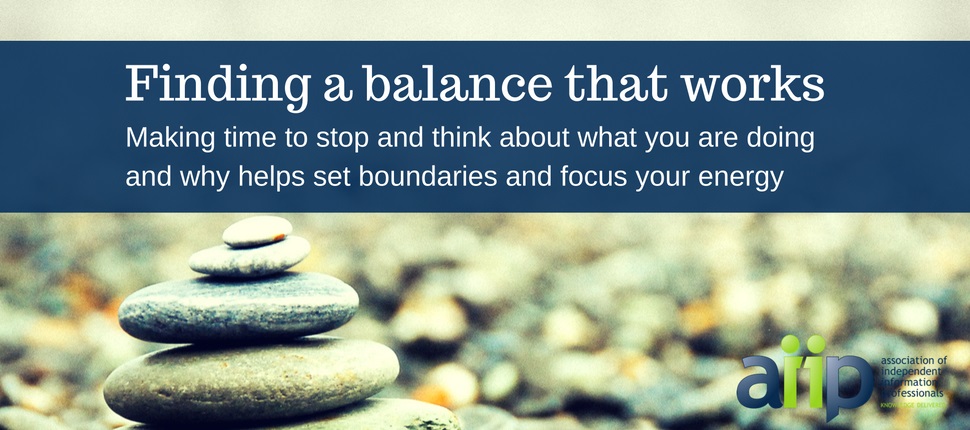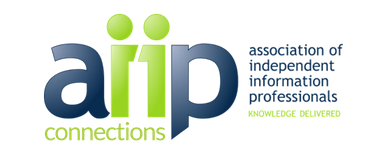Finding a balance that works

Crystal Sharp (AIIP President, 2006) shares her ideas on finding a balance that works.

In the usual course of play, study, or work, individuals — consciously or not — take steps to exert some control over their immediate short-term or long-term future. What is unsettling about Facebook, Linked In, Snapchat and the churn and flux of new social communication channels is the rapid pace at which our world is being stretched, flattened and flexed. As the familiar and predictable structures of social, professional and personal relationships are shifted, we are left less in control.
Sometimes it is hard not to feel left behind as others implement new solutions, devices, and paradigms, and seemingly march confidently into the future. There seems no time to stop, reflect and take stock as the information world keeps up its rapid shifting. However, it seems more important than ever to cut through the many competing claims on our attention and to stop and think about what we are doing, and why we are doing it, so we can meet the future with some confidence, even in this environment.
Set boundaries and prioritize
Each of us should start by identifying our own core competencies and then aligning them with goals. This sets some boundaries and enables focus and prioritization of what to spend precious energy on. We don’t need to be part of everything that is happening around us.
By core competencies, I refer not just to one’s collection of skills, knowledge and experience – but to the unique combination (or portfolio) of skills, services and intangible assets an individual possesses or has access to, that can be used strategically to develop products and services of economic and/or social value. My core competency portfolio, for example, includes not only the education, experience and knowledge I possess, but that of my knowledge network as well as access to knowledge and special services and programs available to me by associations like AIIP and SLA. I bring all these to bear on the products and services I offer my clients.
As information professionals we collectively have the core competencies to understand, harness creativity, and guide developments in information and communication technologies; to preserve knowledge, making it findable, usable and useful; and to educate and empower others in ways we have traditionally done. Now we need to be strategic about doing what we do.
The concept of being “future ready” has different implications depending on the time horizon
Near-term future-readiness requires that we come to terms with change, enhance professional qualifications, understand how new technologies empower, enhance and endanger; and critically assess our core competencies and goals. Longer-term future-readiness, however, demands thinking beyond our individual contexts, to shaping new environments; to providing insight and innovation that influences and guides wider operational, intelligence and social environments; and enhancing sustainability of the profession. We are part of this change and it is up to us to guide that change, to pave the way, to shape the future.
Theodore Roosevelt in his Labor Day address in 1903 was reported to have said “Far and away the best prize that life offers is the chance to work hard at work worth doing.” The democratization of knowledge we are experiencing today offers us this possibility.
We need to seize the opportunity, but maintain perspective and understand that though tools will change and how we work and what we do will change, we cannot lose sight of who we are, what our mission is, and what matters in the long run. We have to find a balance that works.
This post is an updated version of an article originally published in Special Libraries Association’s FutureReady 365 blog.
Crystal Sharp, MA, MLIS, is a Grant Consultant, Researcher and Writer at CD Sharp Information Systems, an independent information business in London, Ontario, Canada. She has been a member of AIIP and SLA since 1998 and was President of AIIP in 2006.





